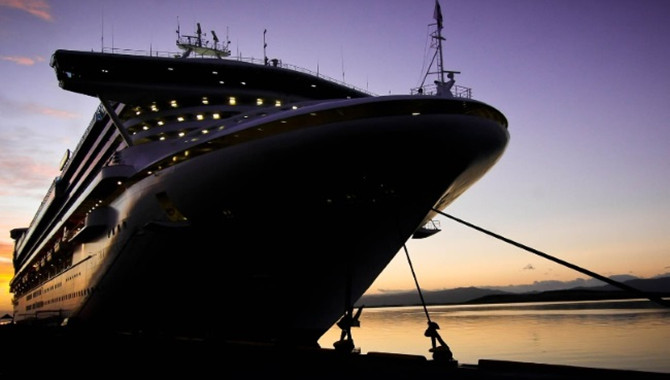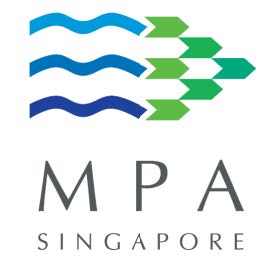
Owner’s decision
Once a vessel owner has decided to lay up a vessel, several important decisions must be made. The most important decision is the duration of the lay-up, which will be critical for the type of lay-up selected. If the owner expects to be able to re-employ the vessel in the next twelve months, a hot (or warm) lay-up will be appropriate, with minimum crew on board to keep the machinery and equipment in operational running condition. If the lay-up is planned to last longer than a year, the owner will probably choose to go for a cold lay-up, which will reduce the daily running costs to the actual lay-up fee and watchkeeping.
Another important decision is where to lay up the vessel. Owners should obtain approval from local authorities, including information on worst-case weather conditions.
Risks related to lay-up
The fact that a vessel has been laid up does not eliminate the risk that a claim may be made by the assured against the insurer during the period the vessel is laid up. The risk after lay-up will depend on a number of factors.
Lay-up has two phases – the lay-up itself and the reactivation, including the trading period immediately after breaking lay-up. Each phase has a different risk profile.
During lay-up the following risk scenarios can arise:
• Risk of being struck by another vessel. Even if the laid-up vessel is without blame, the possibility of the other vessel limiting liability may result in significant unrecoverable costs.
• Risk of breaking moorings. Dragging of the anchor is the most frequent cause of grounding, and having vessels anchored close to the shoreline increases this risk.
• Fire onboard. Vessels laid up in groups next to each other (platooning), can result in cumulative damage. A fire on board one vessel is dangerous but if moored next to other vessels it may spread to these also.
• Low security. Limited manning on board a laid-up and anchored vessel will make it more difficult to cope with emergency situations.
During reactivation or immediately after breaking lay-up the following may arise:
• Failures due to general deterioration of equipment. The atmosphere and especially the humidity may not have been monitored during lay-up, resulting in corrosion and deterioration.
• Failures due to corrosion inside piping systems and valves (hydraulic, pneumatic systems).
• Heavy machinery components sit statically in the same position or are turned with insufficient lubrication film.
• Starting up problems with malfunctioning regulators and control equipment.
• Failures because components have not been cleaned or opened up after months without operation.
• Electronic equipment start-up failures after months with no power and no software updates.
As far as insurance is concerned, lay-up constitutes an alteration of risk, since the vessel is taken out of the normal trade and the operation for which it was designed and equipped. Therefore, the owner (the assured) must inform his insurers that the vessel is taken out of service.
Impact on insurance
This first notice to the insurers will normally be followed by a request for a lay-up return of a portion of the premium, as a properly laid-up vessel may represent a reduced risk to insurers. Insurers will usually request additional information and evidence of safe lay-up, as the full risk picture can only be ascertained if there is total transparency between the parties.
It is a condition for P&I and hull and machinery insurances that the vessel maintains its Classification, either “in operation” or “laid up” status. A suspension of Class for any reason will automatically lead to a loss of insurance, and the insurance will not be reinstated without written confirmation from Class.
The impact of lay-up on the P&I cover is relatively easy to identify as the cargo, passengers and parts of the crew risks are removed or altered. The obvious remaining P&I risks will be possible pollution from leakages (fuel, lube, garbage, etc.) and in worst case a wreck removal if a vessel should break moorings and end up on a beach. Gard’s P&I Rules contain relevant provisions related to survey (Rule 9) and returns of premium (Rule 22). A distinct subjectivity to pro rata reduction of premiums is a minimum of 30 days in lay-up.
The impact on the hull and machinery cover is more complex, as the risk profile changes. The Nordic Marine Insurance Plan defines lay-up as an alteration of risk (§3-26) and requires that a lay-up plan is drawn up and submitted to the hull and machinery insurer for approval.
Upon receipt of a notice of lay-up Gard will request the following:
• Confirmation from owners that the vessel’s Class will be maintained.
• The lay-up plan.
The lay-up plan
The lay-up plan shall include requirements from Classification societies and describe how the vessel is laid-up and how it will be preserved and maintained during lay-up. The lay-up plan should also describe the reactivation procedures as foreseen, but obviously these must be modified according to the length of the lay-up.
Most Classification societies and a number of marine consulting companies have issued guidelines and recommendations on lay-up of vessels. Classification societies may in addition offer technical services such as lay-up surveys and issue lay-up declarations on how the vessel is laid-up and preserved. These are additional services offered by most Classification societies’ consultancy services which the vessel owners have to pay for. These surveys and declarations are highly recommended, as they usually cover in detail all of Gard’s requirements for documentation of a lay-up for both hull and machinery and P&I covers.
Many vessel owners prefer to use their own resources to plan the lay-up and prepare the lay-up plan according to their experience and in-depth knowledge of their vessel. To assist vessel owners, Gard has specified some minimum requirements that should be included in the lay-up plan.
The main three requirements which vessel owners must comply with, are:
1. The lay-up site must be described with particular attention to the weather conditions and must be approved by the local authorities.
2. The mooring and anchoring arrangements must be approved by or through the vessel’s Classification society. A competent body may perform the calculations, but the approval should go through the Classification society.
3. The vessel owner should contact the manufacturers of the critical equipment on board and make sure maintenance, preservation and reactivation are done according to their recommendations. Preserving expensive accommodation areas on cruise vessels is also important.
There are other requirements, such as prevention of and protection from fire and flooding, but the three main requirements listed above ensure that the vessel is laid-up in a sufficiently safe area, the moorings are adequate for the site and expected weather conditions, and the vessel and its equipment are taken care of according to the manufacturers’ recommendations.
Reactivation after lay-up
It is not during the lay-up itself that incidents leading to insurance claims usually happen. The most problematic of the different processes involved in a lay-up, and the easiest to overlook or postpone with a view to cutting costs, is the reactivation. This process can take longer than preparing the vessel for lay-up, and the resources necessary not only from the shore management and crew, but also from external service engineers and shipyards with dry-docks, will be demanding. These services can be in high demand during an economic recovery, which normally is the moment vessel owners want the vessels back in service.
Gard strongly recommends reactivation after long periods in lay-up to be carried out with utmost care and in accordance with Class and equipment manufacturers’ recommendations. Not only should the machinery itself be carefully handled, but attention must be paid to the fuel and lube oil quality, including analysis if these have been stored on board during the lay-up.
When the vessel is reactivated, Class must perform any outstanding surveys together with a full check of the entire machinery installation. Depending on the duration of the lay-up, dry-docking, or at least a sea trial, must be performed. Normally a full Safety Management System audit must also be carried out. The scope of the required surveys will depend to a certain degree on the preservation and maintenance carried out before and during the lay-up. It is therefore very important that these measures are documented during the lay-up. In the event of an insurance claim at a later stage, such documentation will be important to demonstrate that the necessary precautions were taken in accordance with manufacturers’ recommendations.
Underwriters may include specific reactivation clauses as part of the cover during lay-up. The main requirement is, again, the involvement of Class and manufacturers, but a separate “additional machinery deductible” may be introduced for a limited time after breaking lay-up to cover the additional risks.
Recommendations
It is recommended that the assured notify the insurers early in the planning of an upcoming lay-up period for a vessel. Based on the information provided, the insurers will determine if the idle period will be considered a lay-up and to further consider if they will require a third-party review of the lay-up plan and arrangements.
Furthermore, the insurers should be advised as early as possible when a decision is made to reactivate the vessel, in order for the insurers to review to what extent a reactivation survey should be carried out and to allow for the involvement of the surveyor at an early stage of the reactivation and re-commissioning planning.
ANNEX 1 – Minimum requirements to be included in a lay-up plan
1. Lay-up site
A description of the lay-up site must be provided with a particular focus on the local weather conditions. The lay-up site must also be approved by the local authorities. Lay-up in hurricane-affected and/or tropical areas must be the subject of particular considerations.
2. Mooring/anchoring arrangements
Description and maintenance routines of anchoring and mooring arrangements must be provided including distances to shore and to other vessels. The arrangements should preferably be approved by the vessel’s Classification society or by a consultant appointed by them, but other competent bodies may also be used.
Information on seabed, maximum wind forces and direction, shore and on-board bollards, anchors with systems is needed for calculation purposes. The anchor windlasses and mooring winches which are in use or under constant tension must be the subject of frequent testing and maintenance to ensure that they function properly at all times.
3. Class status
Gard generally requires that the Class is changed into the status of “laid-up” to facilitate a return of premium. Annual and other mandatory surveys must be carried out in accordance with Class rules. As for vessels in normal trading it is a pre-requisite for cover that the Class rules and regulations are followed at all times also during the lay-up, and any suspension of Class will lead to termination of the insurance cover.
4. Minimum manning
The flag state’s requirement as to minimum number of crew for the different lay-up situations must be maintained. If watchmen and routine maintenance as described in the lay-up plan are contracted out to third parties, these arrangements must also be described in the lay-up plan.
5. Power availability
The lay-up plan should also include the envisaged need for propulsion power and describe the availability of tug assistance in the lay-up area.
6. Protection against explosions and fire
All cargo tanks, pump rooms, cofferdams and cargo lines must, as a general rule, be kept gas-free during lay-up. Inerted tanks may be acceptable if approved by local authorities. Hot work is only permitted if a valid gas-free certificate is kept on board.
All fire alarm systems must be fully operational during lay-up. The vessel’s normal fire-fighting systems must be available and ready for use. If fixed fire-fighting systems (CO2 tanks) are disconnected for any reason, substitute systems must be operational and approved by Class.
7. Precautions against flooding
All sea overboard valves not in use must be closed. If seawater coolers/condensers etc., are left open, the seawater connections must be blanked off.
The water level in the ballast tanks, pump room and bilges must be checked regularly and bilge alarm systems for all spaces must be maintained in normal operation. Temporary bilge alarm systems for cold lay-up conditions are acceptable. All watertight doors and manholes must be closed.
8. Maintenance of equipment
The lay-up plan must also include specific items in accordance with the manufacturers’ recommendations as to the preservation, maintenance and operation of machinery and other equipment to prevent damage occurring as a result of the items not being in normal use. The plan should describe the preservation and maintenance of among others:
• Main engine with turbocharger, gear and shafting arrangement
• Auxiliary engines with generators
• Boilers
• Rotating equipment such as pumps, compressors etc.
• Vessel type specific equipment
• General requirements as to ambient temperature and humidity, use of heaters, dehumidifiers, preservation oil, etc.
9. Resuming of trading/breaking of lay-up
The extent of survey and testing when breaking lay-up will depend on the extent of maintenance and other preservative measures which had been undertaken during the lay-up and the reason for breaking lay-up (trading, dry-dock for re-commissioning, scrap). Gard’s requirement is that Class’ requirements for re-commissioning are followed, and that the manufacturers’ recommendations for preservation and maintenance have been followed during the lay-up and re-commissioning.
Source:Gard
The opinions expressed herein are the author's and not necessarily those of The Xinde Marine News.
Please Contact Us at:
admin@xindemarine.com


 Baltic Exchange launches new Fuel Equivalence Conve
Baltic Exchange launches new Fuel Equivalence Conve  21 Consecutive Years of QUALSHIP 21 Recognition for
21 Consecutive Years of QUALSHIP 21 Recognition for  MPA and Wärtsilä Renew Partnership to Drive Marit
MPA and Wärtsilä Renew Partnership to Drive Marit  MPA and Dalian Maritime University Renew Partnershi
MPA and Dalian Maritime University Renew Partnershi  PSA INTERNATIONAL, DNV AND PACIFIC INTERNATIONAL LI
PSA INTERNATIONAL, DNV AND PACIFIC INTERNATIONAL LI  INTERCARGO Reaffirms Call for Simplicity as IMO Cli
INTERCARGO Reaffirms Call for Simplicity as IMO Cli